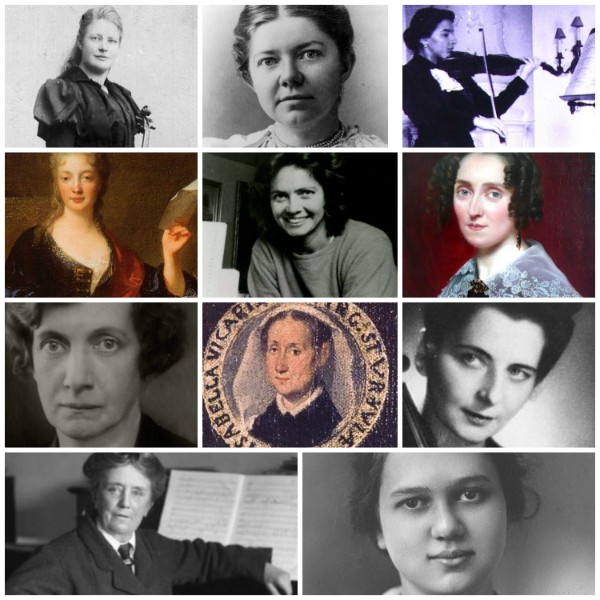Getting a good night’s sleep is not a luxury. It’s a necessity for our physical and mental well-being.
Music can help people relax and fall asleep faster. Classical piano music can be especially effective at inducing sleep.

© Getty Images: twomeows
In this article, we explore ten pieces of classical piano music that are perfect for aiding sleep. You’ll be drifting off in no time!
Erik Satie: Gymnopédie No. 1
Satie‘s Gymnopédie #1 is a gentle composition for piano. Its repetitive, rocking accompaniment in the left hand evokes the motion of a cradle or a hammock. That in turn can help slow a listener’s breathing and heart rate, creating a state of calm.
The other two Gymnopédies – #2 and #3 – are very similar in character. They would also work well to help a listener fall asleep.
J.S. Bach: Goldberg Variations – Aria
Legend has it that Bach wrote his Goldberg Variations for an insomniac count. It’s easy to see where this legend came from! The opening aria’s soothing melody will quickly lull any listener to sleep.
Robert Schumann: Träumerei
Schumann‘s Träumerei (“Dreaming”) is from a collection of thirteen piano pieces called Kinderszenen, or “Scenes from Childhood.”
Its graceful, simple, innocent main melody, with its delicate accompaniment, evokes a contemplative atmosphere: perfect for relaxation.
Claude Debussy: The Girl With the Flaxen Hair
The impressionistic style and dreamlike qualities of Debussy‘s “The Girl with the Flaxen Hair” (From Debussy’s Prelude Book I) make it a great piano piece to listen to when falling asleep.
Enjoy the gently repetitive and cyclical nature of the melody, and how Debussy carefully stretches and alters that melody throughout the piece.
Claude Debussy: Rêverie
Lots of qualities make Debussy’s Rêverie for solo piano relaxing. The first one is evident in its opening notes: the rhythm in the left hand imitates lungs inhaling and exhaling.
When the opening theme eventually reappears after a contrasting center section, it’s a magical moment of release.
Franz Liszt: Consolation No. 3
Liszt‘s Consolation No. 3 is a soft, romantic, meditative solo piano piece.
It begins with a simple, soothing melody in the right hand, while the left hand provides a gentle accompaniment.
The simplicity and elegance of that melody, combined with the nuances of phrasing and dynamics that a talented pianist will bring to their performance, creates a tranquil atmosphere that will help any listener unwind.
Maurice Ravel: Oiseux tristes
Ravel‘s “Oiseaux tristes” (“Sad Birds”) features a slow and melancholic melody meant to be played with a delicate touch. The piece’s dynamic range is narrow, and Ravel’s use of repetition and cyclical patterns are hypnotic: two qualities that contribute to its overall calm mood.
Frédéric Chopin: Berceuse
Chopin’s Berceuse – literally, “cradle song” – began life as a theme and variations with an accompanying repeated bassline.
Eventually, however, Chopin turned it into a lullaby. It may have been meant as a tribute to soprano Pauline Viardot’s daughter, who was staying with Chopin when it was written.
Despite the rigor of its craftsmanship – it’s never easy to write over a repeated bass line without sounding repetitive! – the final version of the Berceuse retains its lullaby-like air.
Franz Schubert: Impromptu No. 3 in G-flat Major
Schubert’s third impromptu is marked andante, which, loosely translated, means “at a walking pace.” It features a constant rippling accompaniment to a gentle, romantic melody.
This rippling accompaniment and dreamy theme combine to make it a perfect piece to relax and dream to.
Ludovico Einaudi: Fly
Some classical music snobs loathe the music of composer Ludovico Einaudi. They especially hate his oftentimes repetitive chord progressions.
But even the haters have to admit that a predictable chord progression is relaxing. One example of Einaudi’s piano output in this vein is the piece Fly.
Incorporating classical music into your bedtime routine can help promote relaxation and deep sleep. We hope this piano music in particular helps you sleep well tonight. Sweet dreams!
For more of the best in classical music, sign up for our E-Newsletter




Thank you for this lovely article, array of beautifully sensitive compositions, and performances by these wonderfully accomplished artists. I would add internationally known concert pianist, Andrei Ivanovich, whose album “Musica Classica Para Dormir” is also worthy of listening and mention. Not only does the music you have shared here help with sleep and relaxation, but I believe will also help to quiet the mind of those experiencing loss or gradual decline of brain health, such as in the case of dementia patients. I would hope that more medical professionals and family members caring for them would be made aware of the healing that can come with listening to classical music.